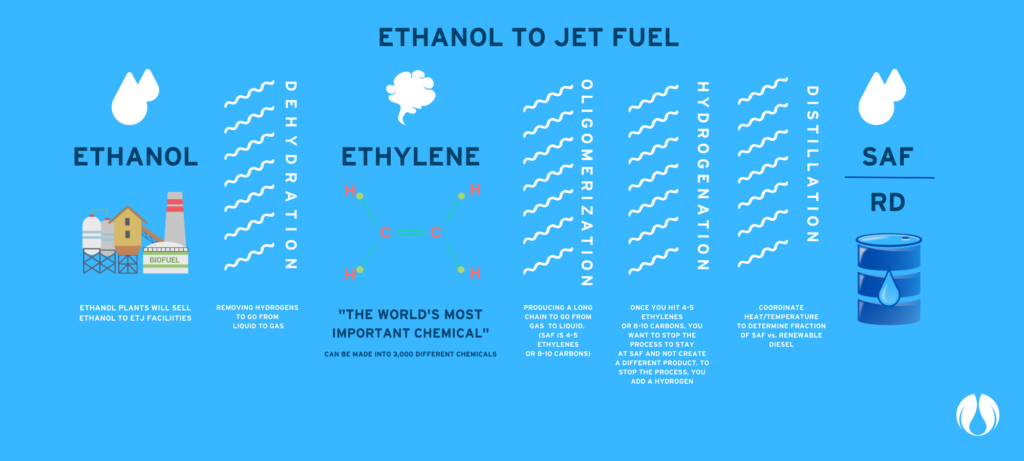
The Asks
Congress should
- Ensure tax credits like the 45Z clean fuel production credit use the U.S. Department of Energy’s Argonne Greenhouse Gases, Regulated Emissions, and Energy Use in Transportation (GREET) model.
Treasury should
- Follow Congressional intent by using two different carbon models to apply the 45Z clean fuel production credit.
- 45Z includes all aviation and non-aviation biofuels and requires different modeling for each.
- For SAF, Treasury should use the International Civil Aviation Organization (ICAO) model, or a model “similar” to ICAO that meets the greenhouse gas definition in the Renewable Fuel Standard (i.e., 40B GREET).
- For non-SAF, Treasury should use the Argonne GREET model or a “successor” model to Argonne GREET.
- 45Z includes all aviation and non-aviation biofuels and requires different modeling for each.
States should
- Enact their own sustainable aviation fuel tax credits in order to incentivize production.
What Is Sustainable Aviation Fuel (SAF)?
SAF is broadly defined as any fuel used in planes that is derived (in whole or in part) from renewable resources. Under the Inflation Reduction Act (IRA), to qualify as SAF, the fuel must achieve at least a 50% GHG emission reduction compared to base jet fuel.
How Is Sustainable Aviation Fuel Made?
Farm-based feedstocks are the only sources of clean, renewable energy available in large enough volumes to deliver on our SAF decarbonization goals. In a novel process called ethanol-to-jet (ETJ), ethanol is dehydrated into ethylene and then fed through a series of other chemical processes that eventually yield sustainable jet fuel.

What Do Lifecycle Analysis and Carbon Modeling Have to Do with SAF?
To spur new investments and ensure growth in the still-nascent SAF market, low-carbon biofuels like bioethanol that are made with farm-based feedstocks must be allowed to qualify for certain tax incentives enacted in the IRA. The size of these incentives and the ability of farmers and bioethanol producers to rely on them depends on how much they can show their products reduce greenhouse gas (GHG) emissions compared to standard petroleum. The Treasury–which will award the tax incentives through the Internal Revenue Service (IRS)–will use a lifecycle analysis model to estimate just how much each individual feedstock for SAF (like bioethanol) lowers GHG emissions. Under one model, bioethanol could potentially qualify for the tax credits, but under another model it might not. Which model Treasury allows is of the utmost importance for bioethanol producers looking to enter the SAF market.
For the U.S. market, the most up-to-date science is reflected in the U.S. Department of Energy’s Greenhouse Gases, Regulated Emissions, and Energy Use in Technologies (GREET) model. This model satisfies every criterion contained in IRA for meeting the standard for inclusion as a “similar methodology” for lifecycle analysis, and is cited throughout the IRA to assess hydrogen and non-aviation fuels for the purpose of qualifying for IRA tax credits.
What Impact Would Growth Energy’s Policy Priorities Have on Consumers, the Economy, or the Environment?
Major airlines across the globe and here in the U.S. have made commitments to (and investments in) SAF. The bioethanol industry is best positioned to deliver SAF at commercial scale.
With current technologies, farm-based feedstocks – including ethanol and corn oil – are the primary source of clean, renewable energy that can be used to produce volumes large enough to meet the demand. As a result, harnessing the U.S. ethanol industry – which at 17.4 billion gallons per year accounts for over 80% of biofuel production in the U.S. – will be necessary to achieve U.S. goals for decarbonizing the aviation sector.